Finland study visit on in-depth road collision investigation 2024

A delegation with representatives of the Ministry of Transport and Communications, Ministry of Interior, and the State Agency Road Safety in Bulgaria, as well as the Ministry of Transport and the Road Traffic Safety Directorate in Latvia, and the European Commission accompanied by the European Transport Safety Council (ETSC), participated in a study visit on in-depth crash investigation in Finland on June 4-5, 2024.
The visit was co-organised with the Finnish Crash Data Institute (OTI) in Helsinki, and led by Road Safety Director Kalle Parkkari, as part of the EU Road Safety Exchange project.
The programme began with an overview of the Finnish framework for road safety and crash investigation. The unique status and work of the Finnish Crash Data Institute (OTI) can be traced back to the 1960s when the first in-depth crash investigations were conducted in Finland.
Since then, OTI’s role in improving Finnish road safety and its responsibility for crash investigation have remained highly significant. OTI coordinates the operations of road crash investigation teams and administers the data collected in the investigations, in addition to its other traffic collision statistics.
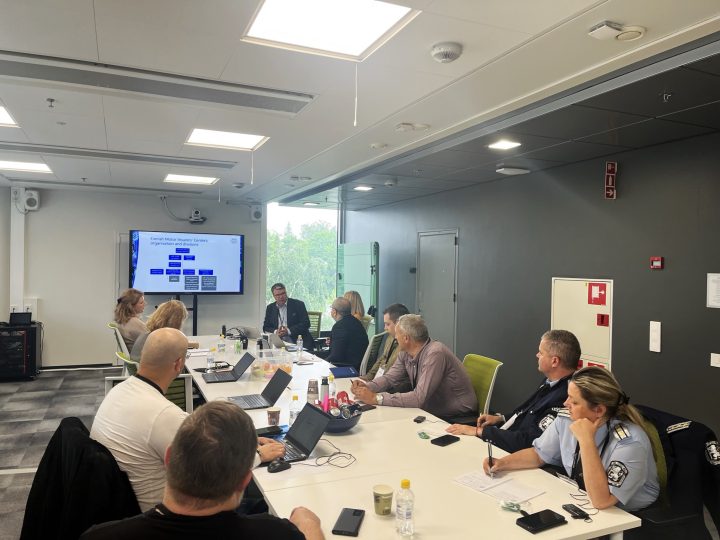
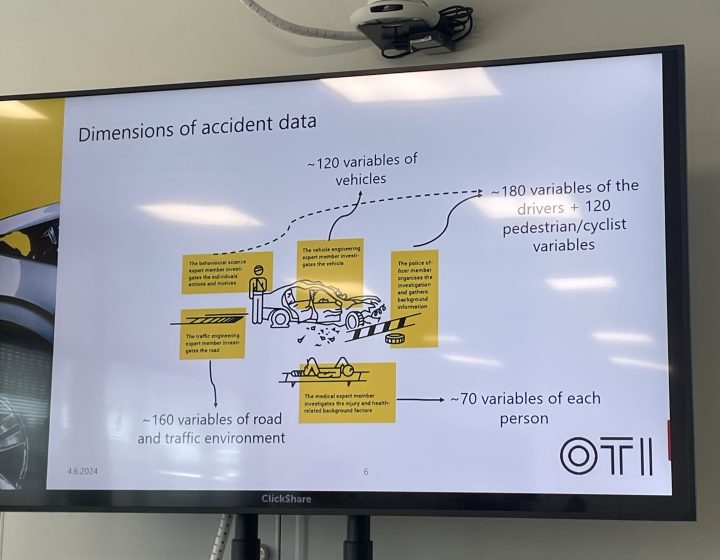
The presentations then focused on the actual investigations conducted by OTI’s members and investigation teams. They covered general principles outlined in manuals that define the roles, goals, and objectives of the investigations, emphasising the strict independence of the process.
The investigation team prepares an investigation report that includes a description of how the crash happened, the factors leading up to it and its consequences, as well as the team’s proposed improvements to traffic safety. The report contains no identifiable data about the crash or the people or vehicles involved in it. Upon completion, the investigation report becomes a public document, while other investigation documents prepared during the work are confidential.
Another important responsibility of OTI’s work is gathering road safety data and the general approach to its importance for road safety analysis and recommendations. The Finnish colleagues demonstrated the databases used by the investigation teams and explained how this data is utilised by OTI and various authorities in Finland.
The collision data is used to improve traffic safety in a very concrete manner. The data is made available for the purposes of scientific and statistical research, both in Finland and abroad. Cooperation with other authorities involved in road safety was highlighted as one of the most crucial factors for the efficient and successful work of OTI and its investigation teams.
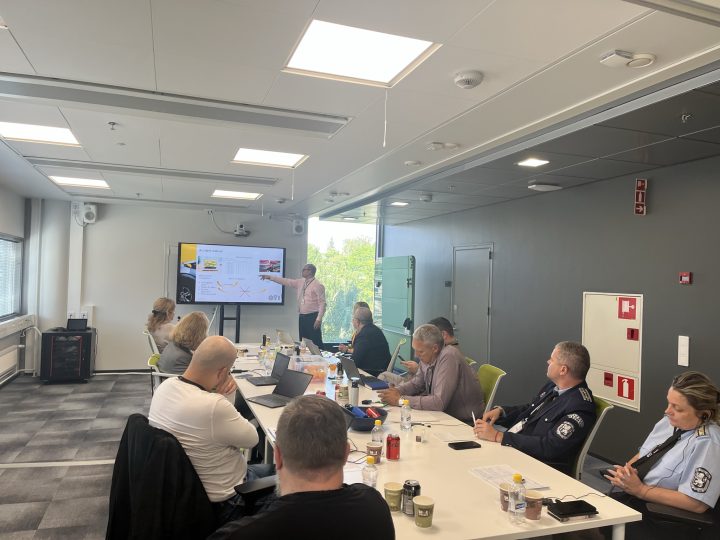

Next, the structure and roles within the investigation teams were discussed. 20 teams, comprising over 300 members, cover the entire territory of Finland. These teams include specialists from various fields, such as police officers and vehicle experts. OTI ensures that investigators receive the necessary training, covering all relevant topics to enable them to perform their duties efficiently and successfully. The size of these teams depends on the density and activity levels of the territories they are responsible for.
Questions were raised regarding the legal framework, the motivation behind the voluntary participation of crash investigators, and coordination with authorities such as the police and transport authorities. Both Bulgaria and Latvia are currently exploring possibilities to establish and improve crash investigation related to road transport.
On the second day, participants visited a recovery yard for a practical vehicle investigation in Espoo. This is an important part of the complex investigation procedures involved in cases analysed by OTI. At the recovery yard, cars from crash sites were carefully examined. Vehicle specialists conduct a general overview of the vehicle and analyse in details the impact of the crash.
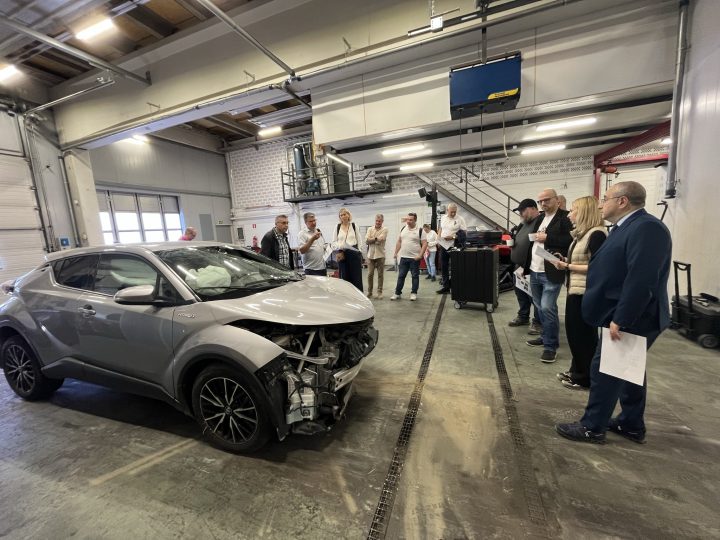
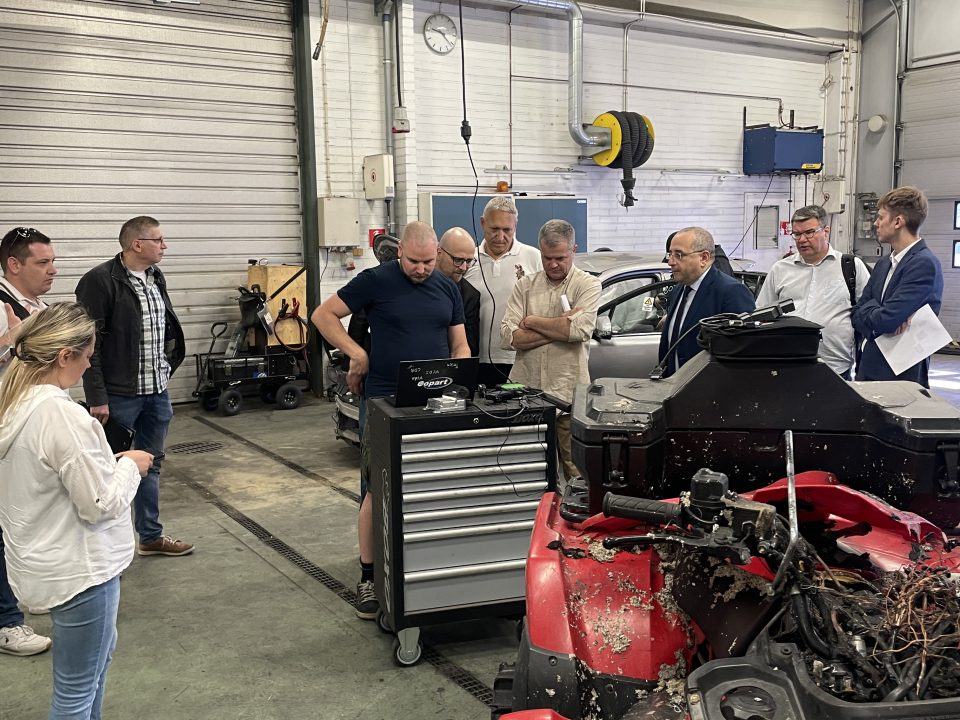
Experts from the recovery yard demonstrated the retrieval of data from event data recorders in cars. An Event Data Recorder (EDR) is a device installed in a motor vehicle to record technical vehicle and occupant information for a very brief period of time before, during, and after a crash solely for the purpose of monitoring and assessing vehicle safety system performance.
The information obtained offers valuable insights into the vehicle’s behaviour seconds before the crash. Data such as the last recorded speed, acceleration, and steering are collected and can be used for further investigation into the causes of the crash.
Later on, participants received a tour of the recovery yard, where they were shown different sections for keeping post-crash vehicles, with separate sections for hybrid and electric vehicles. This offered a chance for further discussions and exchange of experiences regarding investigation outcomes and the elements that can be analysed for investigations directly from the vehicles.
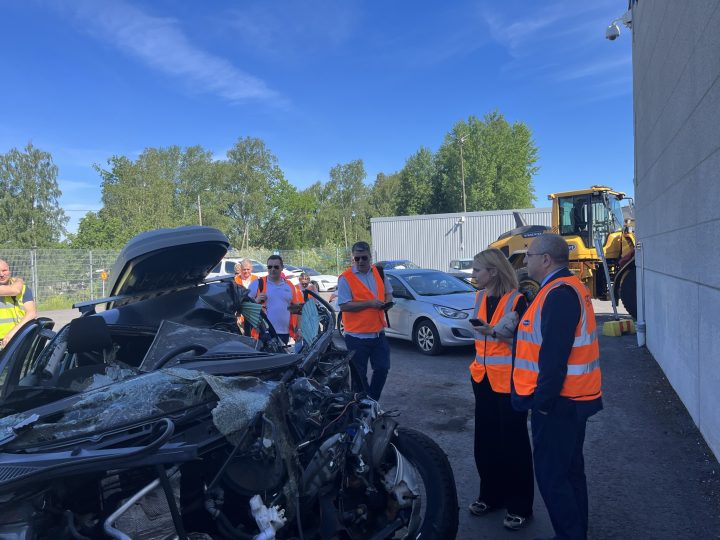
The good practices demonstrated by Finnish colleagues at OTI revealed that in-depth crash investigation, coupled with the analysis and collection of various related data, forms a strong basis for improving road safety. Both the Bulgarian and Latvian delegations were eager to learn and discuss shared experiences of in-depth crash investigation and were keen to continue improving these procedures in their countries.